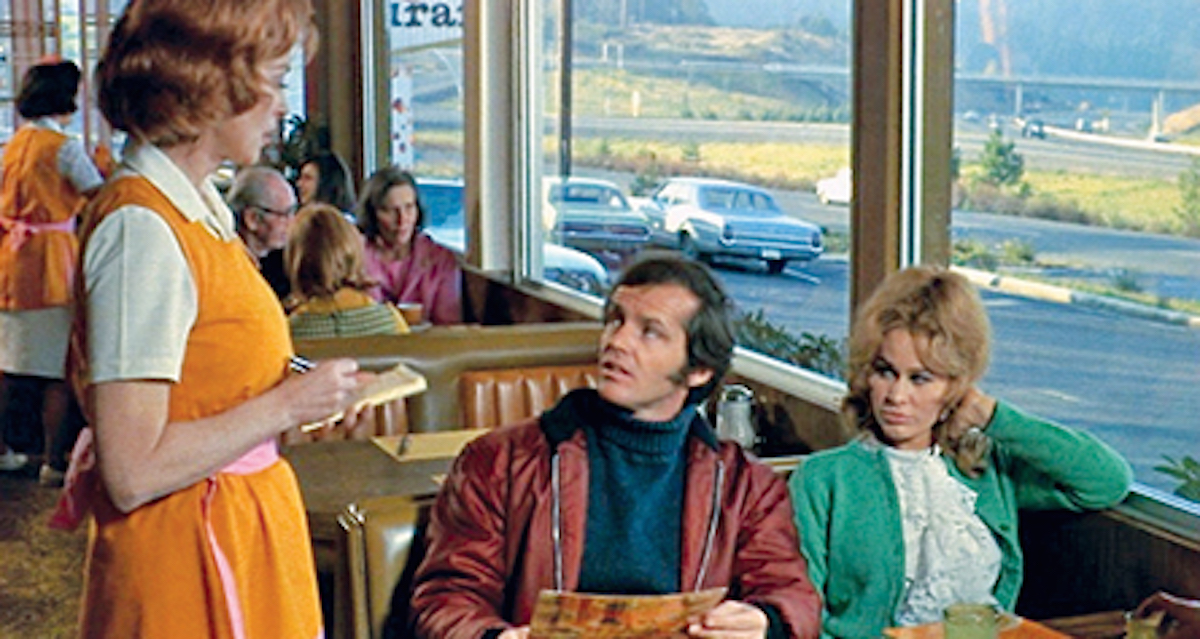Archive for January, 2021
Happy New Year (For Trees)
Posted by Joshua Sharf in Uncategorized on January 28th, 2021

Today is Tu B’Shevat, the 15th of the Hebrew month of Shevat, celebrated as the New Year for Trees. It’s not that the trees all turn into drunken ents for the day, or go all Dr. Seuss and begin dancing around. Trees do not have souls or even spirits. (Judaism is rigorously monotheistic that way.)
Rather, it’s the date on which the trees are regarded as being one year older for tithing purposes. The first three years of a tree’s life, its fruit is forbidden for eating, and on the fourth year, its first fruit is tithed. Tu B’Shevat is the date on which a tree “ages” a year for purposes of this calculation.
Over the years, it has also become a Zionist ecological holiday. When Jews began to return to our ancient homeland, it became clear that in order to revitalize the land, trees would have to be planted. The project became a national one, with settlers doing the planting, funded by worldwide fundraising efforts.
The organization that took over that operation became known as the Jewish National Fund, and you can still contribute today and have a tree planted in your honor, or in the honor of someone you choose.
Prior to that, it was a day of note with no real ceremonies or observance. This kind of a vacuum was an open invitation to the mystics of the city of Safed near the Galilee, and they developed a Tu B’Shevat seder, consisting of four cups of wine (or grape juice) and fruits and nuts of the Land of Israel. It’s become increasingly popular, in various forms today.
Unfortunately, the vacuum of formal ritual has also been an invitation to contemporary politicization. Leftists have seized control of the day and turned it into a celebration of Jewish environmentalism, something entirely different either from its original intent or its commemoration about the mystics of Sefad.
In a highly readable article from a few years ago for the Hudson Institute, Tevi Troy reviews these historical and theological developments in detail.
The point is not that these individual environmental programs are bad or problematic in and of themselves. The vast majority of Jews, as well as Americans, agree that the environment is important and that current attitudes in favor of recycling and against pollution are good things. The question at stake is whether linking a Jewish observance to these modern values is a good thing for Judaism, both politically and religiously.
From a political standpoint, the redefinition of the New Year for Trees is an attempt to indoctrinate children in environmental activism while cementing the Jewish community’s ties to environmental causes. Now, while most Jews are liberals, not all are, and the identification of Judaism with a political movement risks alienating those with differing political beliefs. Judaism today, with its increasingly tenuous hold on its American members, cannot afford to risk alienating co-religionists, even those in the minority.
Troy makes mention of the fact that the current incarnation fundamentally alters Judaism’s emphasis:
Tu B’Shvat’s modern incarnation as an environmentalist holiday has another political implication as well. Long before any of the modern Tu B’Shvat observances merged, Judaism was and remains an environmentally friendly religion. Its view of the environment, however, is based in the sense of responsible individual stewardship and in the goodness of Creation, rather than in a critique of humankind. Judaism traditionally sees humans as keepers of the environment, not as hostile actors in conflict with it. But modern Tu B’Shvat observances, not to mention environmental-activist groups, mostly see man as the problem.
In 1998, Manfred Gerstenfeld anticipated some of these developments, and wrote a fine little survey of normative Judaism’s approach to these issues, Judaism: Environmentalism and the Environment. Unfortunately, rather than becoming a staple of the Jewish-American bookshelf, it appears to be out-of-print and all but unavailable.
Troy doesn’t discuss an additional danger. As environmentalism increasingly evolves into a religion of its own, it poses the peril of reintroducing nature-worship into a religion and people who had thoroughly expelled all such practices millennia ago.
Gaming the System
Posted by Joshua Sharf in Uncategorized on January 27th, 2021

In today’s trading, things for GameStop (GME) have gotten even frothier. The stock closed at $145, traded after-hours mostly in the $200-220 range, opened this morning at $312, and is currently set to close at about $350 a share.
The mania has now spread to another stock, AMC Entertainment (AMC), which is up 300% today, quadrupling in price. Like GME, it was a popular short play, with short interest being about 33% of shares in the market, also called the float. And like GME, about 1/3 of its shares available to trade are not on the market, but held by the company’s treasury.
With so many shares in reserve, this might seem like a good time for the companies to cash in themselves, dribbling out reserve shares at a hyper-inflated price. In my last post, Stop the Games, I mentioned that it would be difficult for a company to do that, and I’d like to expand on that a little.
Right now, the situation is that a self-organized, relatively leaderless mob has decided to pull a bull raid on a couple of stocks. They’ve done this on their own, which is different from how these runs usually happen. It doesn’t appear to be simply a case of greater fool trading.
But by their nature, such groups could be manipulated by a savvy operator. It appears that in both cases, AMC and GME, the stocks were discussed for a while before the group decided to move.
If a company were to start monitoring social media, and subtly encourage the group to begin a bull raid. The company would then be able to execute the strategy outlined above, selling shares into the market, at a slow enough rate to rake in some cash, but perhaps not enough to move the price down.
Doing that would be a clear SEC violation, and obvious fraud, but it might not be all that easy to detect in the flood of messages, at least not at first.
And even if the company were completely innocent, participating only passively in the group and selling once the price spiked, they’d almost certainly have to undergo a painful SEC investigation anyway. So the price of even honest opportunism is a federal investigation into all the company’s electronic communications.
That’s why they can’t take advantage of this spike, even if they wanted to.
It is, however, a good reason for these chat rooms to remain open, as long as they’re just traders bandying about comments and information and even rumor. They can provide a company a heads-up on when such a mob might start taking an interest in its stock, and help keep them apprised of what people are saying in general.
Once such a forum becomes a place to actively coordinate an attack on the stock, however, it needs to be closed down.
Stop the Games
Posted by Joshua Sharf in Uncategorized on January 26th, 2021
Restaurant Scenes
Posted by Joshua Sharf in Movies on January 23rd, 2021


The bottom photo is Jack Nicholson in his famous restaurant scene from Five Easy Pieces, made in 1970. Nicholson plays a failed, or self-defeated, concert pianist working a series of blue-collar jobs. It’s fait to say his character has a lot of repressed anger over his life and his family situation.
He wants toast, which isn’t on the menu, and which the disinterested waitress refuses to serve him. Nicholson gets increasingly frustrated and angry as he tries to order it through a variety of maneuvers. Eventually, furious beyond all proportion to the problem, he insults the waitress and explodes in rage, leaving the restaurant.
The top photo is from a less well-known movie, When Tomorrow Comes, from 1939. Charles Boyer is a famous concert pianist who also, as the film will out, has a difficult family situation.
Here, he’s trying to order a couple of slices of American cheese. Similarly, the restaurant doesn’t serve cheese except on apple pie, which Boyer detests. He’s also a little frustrated, and asks the waitress, slyly, if he can order the pie, and just take the cheese. Unlike Nicholson, Boyer doesn’t insult the waitress – who clearly wants to help but doesn’t know how – and instead is aided by Irene Dunne, also a waitress in the restaurant.
The 1930s were a tough time, and even in 1939, the economy hadn’t really recovered. Dunne’s character makes a rousing speech at a union meeting, encouraging the reluctant waitresses to strike. But there’s nothing of Nicholson’s nasty, vicious rage or the impatient indifference of his waitress in When Tomorrow Comes, probably because it’s more melodrama than psychodrama.
But one can’t discount the temper of the times, either. Nineteen thirty-nine was an angry year, like 1970, but people were more hopeful and felt less powerless. Nicholson’s temper tantrum is what people do when they feel they have no choices. Boyer is mature enough not to take his home situation out on innocent bystanders. Indeed, anyone acting like Nicholson in 1939 NY would have been carted off to jail, if not Bellview.
Five Easy Pieces was probably the better film. When Tomorrow Comes is entertaining, but it wasn’t even the best Boyer-Dunne melodrama of 1939. That would be Love Affair, later remade as An Affair to Remember with Cary Grant and Deborah Kerr, emphatically not remade as Sleepless In Seattle. Both Love Affair and Five Easy Pieces got Oscar nominations for Best Picture, and for Leading and Supporting roles. But Boyer is more pleasant to watch, especially since his character doesn’t insist on destroying every life he comes in contact with, including his own. He just wants some cheese.
MLK Day Reading
Posted by Joshua Sharf in Uncategorized on January 18th, 2021

On Martin Luther King, Jr. Day, many people will post quotes from the great man himself, or videos of the “I Have a Dream” speech, or some-such. There’s nothing the matter with that, insofar as it keeps the spirit of the day front-and-center.
Some will attempt to hijack it for some partisan purpose, either to ridicule or shame members of the opposing political party. I think there’s a great deal the matter with that.
As an alternative, I would like to suggest a fine book by the esteemed scholar Jacques Barzun, Race. Amazingly enough, it was written in 1937, and yet for the most part reads as though it could have been released last year or last week. Or, sadly, next year or next week.
In it, he traces the roots of the concept of race to intra-European rivalry, particularly that between the French and the Germans. Each attempts to locate the idea of an Ur-race both for itself and for the other, and each attempts to define certain qualities of that race. In this effort, nobody succeeds, even in internal consistency, never mind being persuasive to those outside the fight. Things get even worse when the basis for “race” moves from the sociological to the phrenological.
In the end, Barzun comes to condemn the entire concept of race as little more than politically-convenient collectivism, a superstition that falls apart under his close examination. Sometimes, this is caricatured as meaning that he’s denying the existence of genetics, but as he’s writing before Watson & Crick, but with the knowledge of Gregor Mendel, he is nowhere close to doing that. What he is doing is denying the attribution of alleged “racial” characteristics to individuals whom one decides to lump in with that tribe.
The last paragraph here may have spoiled Barzun’s conclusions, but it hardly spoils the book, which while brief, is not an easy or light read. It is, on the contrary, a solid and dense tour through the intellectual pedigree of this misbegotten concept.
And, to draw the connection with today’s remembrance, if race itself is little more than a tribal construct, often imposed from without, then what cause can there be for anything other than equality of the individual before the law?
Vermont’s Secretary of State Undermines Democracy, Violates Federalism
Posted by Joshua Sharf in Uncategorized on January 14th, 2021
Minnesota, like a great many other states, participated in our great national mail-in voting experiment during last fall’s elections. And like a great many other states – either through Democrat lawsuit or Democrat rule-making – it eliminated meaningful ballot security. In Minnesota’s case, this meant removing both voter identification and signature witnessing for first-time mail-in voters. Combined with our country’s notoriously sloppy voter rolls, the net result was a system where it was virtually impossible to be sure that the ballot being returned was actually voted by the person who allegedly signed it.

While the presidential race wasn’t particularly close, a number of state legislative races were decided by extremely close margins, enough races to potentially have shifted the balance of power in the state House of Representatives. But the forensic work required to track down potentially fraudulent votes is enormous, certainly impossible between election day and the vote’s certification. It’s unlikely that we’ll ever know the total number of ballots fraudulently cast, and now those voters are part of the mail-in system.
In order to get things back under control, a Republican state senator has proposed that the state issue a specific photo ID to be used for voting. The ID would be issued for free to those who can’t afford it. Such an ID would also help to keep the voting rolls cleaned up, since it would be tied specifically to voting, unlike a drivers license or a Social Security card.
The senator proposing the bill also notes that it would help restore some faith in the voting system. No doubt this is true, although it would be more true if the Democrats hadn’t fought tooth and nail to derail even legitimate inquiries into voting irregularities in last year’s elections.
All of this proved too much for Vermont’s secretary of state, Jim Condos, who tweeted out the following:
Apparently, requiring that voters prove that they are who they say they are does “little” but suppress their votes. Note also that Senator Newman doesn’t allege that there was fraud, only that many people believe there was. Without any sort of long-term follow-up, given the lax rules in Minnesota, it’s hard to blame them for being suspicious. But Condos does, of course.
It’s unclear exactly what Condos finds “not acceptable.” Is the assertion of fraud, which nobody has made? Is it the “suppression” of eligible voters, which would in no way happen under the proposed law? It’s hard to tell.
But then, what business does the Vermont secretary of state have expounding on proposed election law in Minnesota. One of the most effective complaints about the last-minute Texas election lawsuit was that it would violate federalism. Indeed, one of the effective arguments against the so-called National Popular Vote interstate compact is that electors in, say, Colorado, would find themselves bound by the results of rules their state had no hand in making.
Instead, we see the fruits of the Democrats’ Secretary of State project, where those in charge of administering our elections and ensuring their integrity use the system to undermine that integrity, and then complain that people have no confidence in the system.
Rep. Jason Crow Has A Short Memory
Posted by Joshua Sharf in Uncategorized on January 12th, 2021
Jason Crow has just begun his second term representing Colorado’s 6th Congressional district. In response to last week’s riot at the US Capitol building, he has been tweeting frequently, in disgust at what happened (a disgust I share).
But he has also sought to turn the events to partisan political advantage, looking to turn the actions of a few hundred people on a single day into a general assault on the Republican Party.
He has, for instance, used his campaign account to accuse any and all Republicans who objected to the electoral vote counts from a handful of states of effectively taking the side of the rioters. This is, of course, rubbish from beginning to end, but it’s rubbish that much of the press seems to take seriously, if the reporters I follow on Twitter are representative of their caste.
Having established that narrative, Crow used his campaign account to call for corporate PACs to defund any Republicans who objected to the vote:
And he has used his official House account to claim this:
That is, anyone who suggested that anyone might have used the gaping holes opened up in our electoral process – holes opened up by Democrats – to commit election fraud, is disqualified from complaining about the terms he and President-Elect Biden intent to impose on their version of “unity.”
If anyone should be disqualified from preaching about unity, it’s Crow, whose own version of “truth and accountability” applies to only one form of political violence.
At the end of May last year, BLM protesters did significant damage to the Colorado state capitol, breaking windows, spray painting, among other things, a hammer-and-sickle, and generally trashing the grounds.

The truck of Senate President Leroy Garcia suffered a smashed windshield, and legislators took a few days off from their covid-delayed session to get some security back in place.
Crow’s official press release is titled as a statement about the Denver protests, but it never mentions Denver at all, spending more time trashing President Trump for suggesting that National Guard troops might be needed to restore order.
Later that summer, a protest in Aurora over the police shooting from 2019 of Elijah McClain got out of hand. The protesters took over and started marching down I-225, one of the major routes to Denver International Airport. When a man driving a Jeep on the way to the airport unexpectedly found himself in the middle of this mess, he did the natural thing and floored it, trying to get the hell through the mob and out of danger as quickly as possible.
At that point, one of the protesters pulled a gun and started shooting at the Jeep, hitting two other protesters instead. Fortunately, nobody was killed, but he was eventually charged with attempted murder. The Jeep driver was not charged.
You wouldn’t know any of this from Crow’s official press release on the matter:
We are still learning exactly what happened on Saturday night, but what we do know is horrifying enough: a driver sped through a crowd of protesters causing chaos and harm, in yet another example of the violence that is inflicted on those fighting for justice and equality.
He mentions the destruction at the Municipal Building as a “distraction,” but neither here nor in additional releases on the McClain shooting does he acknowledge that the Jeep driver was acting out of fear and common sense, or that one of the protesters pulled a gun and started shooting.
In another incident last year, protesters “visited” Aurora City Councilman Francoise Bergen at her home, and demonstrated on the street and sidewalk in front of her house. Crow had nothing to say about that, either.
The inescapable conclusion is that for Rep. Crow, all political violence is bad, but some political violence is more bad than others, especially when it comes to his team.
Yoram Hazony writes in his excellent book, God and Politics in Esther, that there are basically three types of subjects in a tyranny. One can oppose the tyrant. One can keep one’s head down and passively support the tyrant. Or one can actively and energetically support the tyrant in ways he finds useful. Only the last is likely to earn much support from the tyrant or advancement within the regime.
Rep. Crow is making a strong bid to be a subject of the third kind.
Reliving the 1984 LA Olympics
Posted by Joshua Sharf in Uncategorized on January 12th, 2021

Watching 16 Days Of Glory and reliving the 1984 Olympic Summer Games.
I came home from work every evening that summer, and plopped down in front of the TV to watch the Games for about 4 hours straight, and then stayed up until 1:00 for the late coverage. After they ended, I went through Olympics withdrawal. And some of the wins, like Joan Benoit in the women’s marathon, and the men’s gymnastics team, are still emotional.
Aside from the things I had forgotten, there are things that I hadn’t noticed before. For instance, before Zola Budd and Mary Decker collided, there was a moment where Decker looked down and frowned, clearly worried that Budd was crowding her. You only see that in slow-mo.
The movie was, I believe, Bud Greenspan’s first for the Olympics.
The cinematography is, of course, first-rate, and David Perry’s dead-pan, emotionless narration lets the athletes tell their own stories.
Given that the USA USA USA dominated the Games, in part because of the Soviet boycott, it could have been mostly about the US team. And he certainly doesn’t short the home team. But he makes room for plenty of foreign victory stories as well.
The photo above is not from the movie. It is, of course, Carl Lewis in the Long Jump, one of four gold medals he won that year. It by Neil Leifer, one of the greatest sports photographers of all time.
Monday Morning Racing
Posted by Joshua Sharf in Uncategorized on January 11th, 2021
In a normal year, today would have been the 3rd day of the National Western Stock Show.

Facebook Censors…The Tax Foundation?
Posted by Joshua Sharf in Uncategorized on January 10th, 2021
Oh, you thought this censorship stuff wasn’t about you, because you weren’t about Trump.
A friend of mind posted the follow on Facebook, only to have the site apply a “fact-check” to it. Understand that “fact-checks” are more than just checking facts. When run by the AP and by FB, they amount to entering the debate on the leftist side.
The Tax Foundation – the source of the data for the graphic used by Fox News – is a thoroughly center-right think tank, devoted to tax policy at all levels of government. The “fact-check” isn’t a fact-check, since it admits the facts are correct. In fact, the “context” that is allegedly missing – that the rates posted are only for the top earners, is literally in the headline for the graphic.
I look forward to any post by the left-of-center Brookings, The Urban League, Urban Institute, or Bell Policy Center being similarly “fact-checked.”
More realistically, we should be waiting to see how long it is before the Tax Foundation is demonetized and then deplatformed altogether.
But consider this an object lesson in how even policy-based right-of-center discussion is forced into pariah status. By putting a “fact-check” on this, it forces someone who posts it to defend the Tax Foundation and their work, with the allegedly objective FB and AP having put their thumb on the scale. Conservatives must work even to have their analyses considered legitimate and within the bounds of informed discussion, never mind get a debate on the facts. Left-of-center posts, no matter how far to the left, are granted immediate legitimacy.




